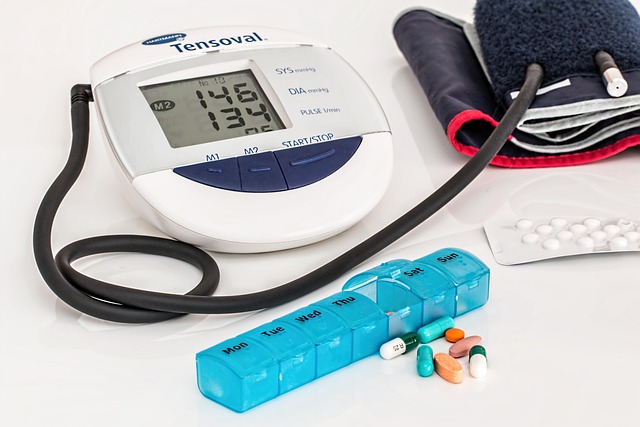Discover the Future of Dental Implants: Screwless Options Explained
If you’re considering dental implants and are mindful of costs, screwless approaches may be an option. This article explains how they work, potential benefits and limitations, and the factors that influence total treatment fees. Exact pricing varies and requires a clinical evaluation.

Dental implant technology has transformed how missing teeth are replaced, offering durable and natural-looking solutions. While traditional screw-retained implants have been the standard for decades, screwless dental implants represent a newer approach that addresses some limitations of conventional systems. These implants use cement or adhesive bonding instead of screws to attach the crown to the implant fixture, creating a seamless restoration that eliminates certain mechanical components.
The shift toward screwless options reflects ongoing efforts within restorative dentistry to simplify procedures, reduce potential points of failure, and enhance aesthetic outcomes. For patients in the United Kingdom seeking tooth replacement, understanding the mechanics, benefits, and costs associated with screwless implants can provide valuable insight into whether this option aligns with their dental needs and expectations.
What Are Screwless Dental Implants?
Screwless dental implants, also known as cement-retained implants, differ from traditional screw-retained systems in how the prosthetic crown attaches to the implant post. In conventional implants, a small screw secures the crown to an abutment, which connects to the implant fixture embedded in the jawbone. This screw-retained design allows for easy removal and adjustment but requires an access hole in the crown.
Screwless implants eliminate the screw mechanism entirely. Instead, the crown is cemented directly onto the abutment, much like a traditional dental crown is bonded to a natural tooth. This approach creates a smoother surface without visible screw access channels, which can improve aesthetics and reduce areas where food particles or bacteria might accumulate. The cementation process uses dental adhesives specifically formulated for implant restorations, ensuring a secure and stable bond between components.
The design simplicity of screwless implants can be particularly advantageous in anterior (front) tooth restorations, where aesthetics are paramount. Without the need for screw access holes, dental technicians have greater freedom in shaping and coloring the crown to match surrounding teeth seamlessly.
Why Are Screwless Implants Becoming a Popular Choice?
Several factors contribute to the growing interest in screwless dental implants among both patients and dental professionals. One primary reason is the elimination of screw-related complications. Traditional screw-retained implants can experience screw loosening over time, requiring adjustments or tightening appointments. The screw access hole, typically filled with composite material, can also become a weak point in the crown structure or a site for staining and wear.
Cement-retained implants address these concerns by removing the screw component entirely. The cemented crown creates a monolithic restoration that distributes biting forces more evenly across the implant structure. This can potentially reduce stress on individual components and contribute to long-term stability.
Another factor driving popularity is improved aesthetics. The absence of screw access holes means the occlusal (biting) surface of the crown remains uninterrupted, allowing for more natural contours and translucency. This is especially important for visible teeth where even small imperfections can affect smile appearance.
Patients also appreciate the simplified maintenance associated with screwless implants. Without screw access holes to monitor or maintain, routine cleaning becomes more straightforward. The smooth crown surface is easier to keep clean with standard brushing and flossing techniques.
How Do Screwless Implants Work?
The screwless implant procedure follows a similar initial process to traditional implants. First, the dental surgeon places a titanium implant fixture into the jawbone during a surgical procedure. This fixture serves as an artificial tooth root and requires several months to integrate with the surrounding bone through a process called osseointegration.
Once integration is complete, the dentist attaches an abutment to the implant fixture. In screwless systems, this abutment is designed specifically for cement retention. The custom-made crown is then fabricated in a dental laboratory based on impressions and specifications provided by the treating dentist.
During the final appointment, the dentist prepares the abutment surface and applies dental cement to the interior of the crown. The crown is carefully positioned over the abutment and held in place while the cement sets. Excess cement is removed from around the margins to prevent irritation to surrounding gum tissue.
The cementation process requires precision to ensure proper fit and seal. Unlike screw-retained implants, which can be easily removed if adjustments are needed, cement-retained crowns are designed to be permanent fixtures. While they can be removed if necessary, doing so typically requires cutting through the crown, which means fabricating a new restoration.
The Key Benefits of Screwless Dental Implants
Screwless dental implants offer several distinct advantages that make them appealing for certain clinical situations. The most notable benefit is enhanced aesthetics, particularly for front teeth. Without screw access holes interrupting the crown surface, dental technicians can create more lifelike restorations with optimal translucency and color matching.
Mechanical simplicity represents another significant advantage. By eliminating the screw component, these implants reduce the number of parts that could potentially fail or require maintenance. Patients no longer need periodic screw-tightening appointments, which can save time and reduce long-term maintenance costs.
The cemented design also provides better passive fit in some cases. When a crown is cemented, minor discrepancies in fit can be compensated by the cement layer, potentially reducing stress on the implant components. This contrasts with screw-retained systems, where any misfit must be addressed through the rigid screw connection.
Gum tissue health may benefit from screwless designs as well. The smooth crown margins and absence of screw access holes create fewer areas where bacteria can colonize, potentially reducing the risk of peri-implant inflammation. Easier cleaning around the restoration supports better long-term oral hygiene.
How Much Do Screwless Dental Implants Cost?
The cost of screwless dental implants in the United Kingdom varies depending on several factors, including the complexity of the case, the location of the dental practice, and whether additional procedures such as bone grafting are required. Understanding the financial investment involved helps patients plan appropriately for treatment.
Generally, a single screwless dental implant, including the surgical placement, abutment, and cemented crown, ranges from £2,000 to £3,500. This estimate encompasses the complete restoration process but may increase if preliminary treatments are needed. Practices in London and other major cities typically charge toward the higher end of this range, while clinics in smaller towns may offer more competitive pricing.
Some dental practices offer payment plans or financing options to make implant treatment more accessible. Additionally, dental insurance policies vary in their coverage of implant procedures, with some plans offering partial reimbursement for the restoration components.
| Provider Type | Treatment Component | Cost Estimation |
|---|---|---|
| Private Dental Clinic | Single Screwless Implant (Complete) | £2,000 - £3,500 |
| Specialist Implant Centre | Surgical Placement Only | £1,200 - £2,000 |
| General Dental Practice | Crown and Abutment | £800 - £1,500 |
| Dental Hospital | Full Treatment with Bone Graft | £3,500 - £5,000 |
Prices, rates, or cost estimates mentioned in this article are based on the latest available information but may change over time. Independent research is advised before making financial decisions.
When comparing screwless implants to traditional screw-retained options, the cost difference is typically minimal. The primary expense lies in the implant fixture and surgical procedure, which remain similar across both approaches. The choice between screwless and screw-retained systems often depends more on clinical considerations and aesthetic priorities than cost factors.
Patients should request detailed treatment plans from their dental providers, outlining all associated costs and potential additional expenses. Some cases may require preliminary procedures such as bone augmentation or sinus lifts, which can significantly increase the overall investment. Discussing payment options and insurance coverage during the initial consultation helps avoid unexpected financial surprises.
Conclusion
Screwless dental implants represent a refined approach to tooth replacement that addresses some limitations of traditional screw-retained systems. By using cement retention instead of mechanical screws, these implants offer improved aesthetics, simplified maintenance, and reduced mechanical complications. The technology is particularly well-suited for anterior restorations where appearance is critical and for patients seeking streamlined long-term care.
While screwless implants provide numerous benefits, they also require careful case selection and precise execution. The permanent nature of cemented crowns means adjustments are more complex than with screw-retained alternatives. Patients considering this option should consult with experienced implant dentists who can assess individual circumstances and recommend the most appropriate restoration approach. As dental technology continues advancing, screwless implants are likely to become increasingly common, offering patients more choices in achieving functional and attractive tooth replacement solutions.




